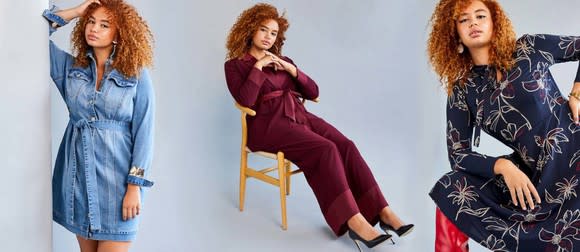Walmart Is Trying to Copy Target's Success Via Acquisition
Walmart (NYSE: WMT) announced two more small e-commerce acquisitions this month. The megaretailer will soon own ELOQUII, a plus-sized women's brand, and Bare Necessities, a lingerie brand. Those two brands join a family that now includes brands like Bonobos, Modcloth, Moosejaw, and Hayneedle.
Private-label brands have been a cornerstone of Target's (NYSE: TGT) recent success. Walmart is taking a shortcut by buying well-established brands, but it has yet to show whether it can successfully integrate those brands into its existing properties to drive sales.

Image source: Walmart.
Target's ballooning brand portfolio
Over the past few years, Target has launched over 20 exclusive brands. Most brands have resulted in significant sales growth. On the company's second-quarter earnings call, CMO Mark Tritton pointed out that the "Home [category] was the standout, with a comp of nearly 10% growth, driven by even faster growth in decor and kitchen, which are benefiting from our new owned brands." Cat & Jack, Target's kids apparel brand launched over two years ago, continues to see sales growth each quarter.
Overall, Target grew comparable-store sales 6.5% and online sales 41% year over year. That's even better than Walmart's 4.5% comp growth and 40% increase in online sales.
More importantly, Target is growing its sales at that pace, both online and offline, without sacrificing gross margin. It's effectively able to mitigate the margin pressure of increased digital sales, which require additional processing and resources, by managing the mix of products between third-party brands and its own brands. Target's gross margin was down 10 basis points year over year in the second quarter. Walmart's, by comparison, was down 34 basis points in its U.S. operations.
That difference might not sound like a lot, but consider that the companies have operating margins around 5% and are massive enough that there's not much operating leverage left to gain. Couple that with the pressure of potential wage increases in the industry, and every point of gross margin matters.
Can Walmart replicate the success?
Walmart has integrated brands into its existing properties where it makes sense. You won't find high-end Bonobos pants on Walmart.com, for example, but you will find Moosejaw apparel. Bonobos pants do have a home on Jet.com (as well as the original bonobos.com).
Walmart is basically trying to shoehorn its acquired brands into its existing assets, which can be an uncomfortable fit for everyone. Target's organic brands are built around its core brand value of "Expect More, Pay Less." Walmart's brand portfolio doesn't have any unifying message other than management felt it couldn't do a better job building a brand in each of those verticals.
There's a second aspect to these brand acquisitions, though. They bring with them the expertise of the founders and CEOs running them. Walmart also gains access to each business's customer profile, which it can use to learn more about what makes those people buy those brands. Walmart has already taken steps to take that expertise and data and integrate it into its business with its own homegrown brands.
In February, Walmart launched four apparel brands, benefiting from the information it's gleaned from Bonobos and Modcloth. It also launched Allswell, a home brand that started with bedding, perhaps learning from Hayneedle. It's worth noting that both are categories in which Target has seen a lot of success with its exclusive brands.
If Walmart can use its acquisitions to copy Target's success, it could see its sales, both online and in store, accelerate next year as it attracts new customers with its brand affinity. But if Walmart can't shake the stigma of value brands, its strategy could be very costly.
More From The Motley Fool
Adam Levy has no position in any of the stocks mentioned. The Motley Fool has no position in any of the stocks mentioned. The Motley Fool has a disclosure policy.

 Yahoo Finance
Yahoo Finance 